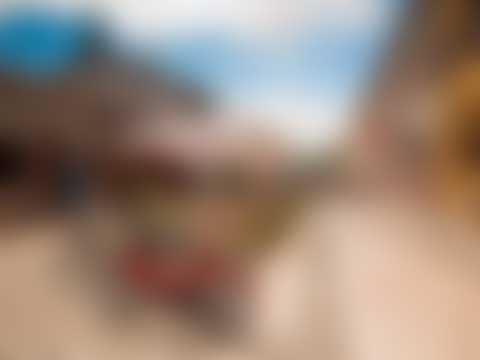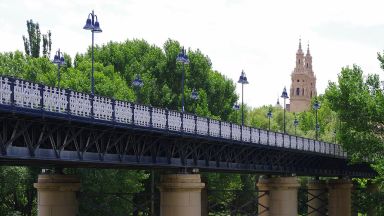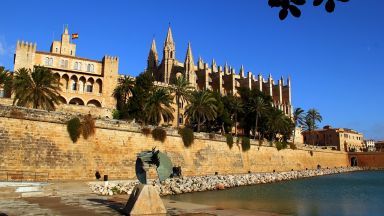Logroño: The Complete Guide
Logrono lies mainly undiscovered among the vineyards of La Rioja. Not only the capital of Rioja, Spain’s wine growing region it is also possibly its gastronomical capital with a great selection of pintxos (Basque tapas) bars. The town is full of of tree-studded squares, narrow streets and hidden corners. Logroño is a city rich in history, originally the Roman town of Vareia, it grew during the Middle Ages being an important crossroad on the Way of St. James and strategic point between the kingdoms of Aragon, Castile and Navarra.
The history of Logroño cannot be separated from the Camino de Santiago . So much so, that the city did not gain importance until the height of the Jacobean route, from the eleventh century.
The Codex Calixtinus (12th century), the first guide to the Camino de Santiago, already mentions Logroño in its pages. And it is that the passage of merchants, artists and pilgrims through the cobbled streets of the Riojan capital for centuries have made the city a crossroads of great cultural relevance.
The Ebro river crosses the city and on it there are two bridges that serve to communicate Logroño with Navarra and Álava. The oldest of them is the Puente de Piedra , which allows the Jacobean route to reach the city. Originally (11th century), it was fortified by four arches and three towers. Another bridge, this time made of iron and built in the 19th century, also crosses this river channel.From the old wall that surrounded the city, the Revellín wall and the Carlos I gate remain standing. During the patron saint festivities, events that recall the French siege of the city are held in this place.The most important representations of Jacobean architecture appear around Rúa Vieja , a traditional passage street for pilgrims heading to Compostela, such as the Pilgrims ‘Hostel or the famous Pilgrims’ Fountain .
Nor does the church of Santiago leave any doubt about the importance of this jubilee route. This monumental building, erected in the 16th century, has a single nave and its façade shows a formidable image of Santiago Matamoros. Inside, the image of the Virgen de la Esperanza, patron saint of Logroño, is venerated.The historic center is home to important cultural events, such as the Cathedral of Santa María la Redonda (15th-18th centuries), which raises its imposing Baroque towers in the Market Square. The current cathedral enclosure sits on an old round Romanesque church. Of the important sculptural work present in the building, the carvings of Gregorio Fernández and a representation of Calvary by the Renaissance master Miguel Ángel stand out.There are many temples in Logroño, highlighting among them Santa María de Palacio , the oldest in the Riojan capital, which presides over the Logroño skyline with its Gothic spire. Inside you can admire a magnificent cloister, a Flemish altarpiece and various Romanesque pieces. Nearby is the Mudejar tower of the church of San Bartolomé , dedicated to the patron saint of the city. Built in the 12th century, it preserves an exquisite sculpted façade and constitutes the only example of Romanesque art in the city.
Logroño also has good examples of civil architecture, such as the Palace of the Marqués de Legarda , the Palace of the Chapiteles or the Museum of La Rioja , installed in the Espartero Palace, a baroque construction from the 18th century. The avenues and squares of Logroño are also a good option to enjoy the atmosphere of its streets. The Paseo del Espolón is one of the emblematic centers of the city and the Plaza del Mercado is a meeting place for its inhabitants.
Visiting Logroño for the first time and wondering what are the top places to see in the city? In this complete guide, I share the best things to do in Logroño on the first visit. Top help you plan your trip, I have also included an interactive map and practical tips for visiting!
This website uses affiliate links which earn a small commission at no additional cost to you.
13 Best places to See in Logroño
This complete guide to Logroño not only tells you about the very best sights and tourist attractions for first-time visitors to the city but also provide insights into a few of our personal favorite things to do.
This is a practical guide to visiting the best places to see in Logroño and is filled with tips and info that should answer all your questions!
New Logroño City Hall

Location: Plaza del Ayuntamiento Av. de la Paz, 11 26001 Logroño La Rioja Spain | Hours: 24 Hours | Price: Free | Distance: 0.90km
Visiting New Logroño City Hall
Puente de Piedra

Location: Puente de Piedra, Logroño, Spain | Hours: 24 Hours | Price: Free | Distance: 1.10km
Visiting Puente de Piedra
Iglesia de San Bartolomé

Location: Church of San Bartolomé, Plaza de San Bartolomé, 2, Logroño, La Rioja, Spain, | Distance: 1.20km
Visiting Iglesia de San Bartolomé
Catedral de Santa María de la Redonda

Location: Catedral de Santa María de la Redonda, Calle Portales, 14, Logroño, La Rioja, Spain | Distance: 1.30km
Visiting Catedral de Santa María de la Redonda
Casa de las Ciencias Logroño

Location: Calle del Ebro, 1, 26009 Logroño, La Rioja, Spain | Hours: Winter hours: Tuesday to Friday: from 9:30 a.m. to 1:30 p.m. and from 5:00 p.m. to 7:30 p.m. Saturdays, Sundays and holidays: from 11 am to 2 pm and from 5 pm to 8:30 pm. Every Monday and January 1 and 6 and December 25: closed.Summer Hours: (July and August) From Tuesday to Sunday, from 11 a.m. to 2 p.m. and from 5 p.m. to 8:30 p.m. Every Monday: closed. | Price: Free | Website | Distance: 1.30km
Visiting Casa de las Ciencias Logroño
Parque del Espolón

Location: Parque del Espolón, Calle Miguel Villanueva, Logroño, La Rioja, Spain | Hours: 24 Hours | Price: Free | Distance: 1.40km
Visiting Parque del Espolón
Old Logroño City Hall (Plaza del Mercado)

Visiting Old Logroño City Hall (Plaza del Mercado)
Puente de Hierro, Logroño

Location: Puente de Hierro 26001 Logroño La Rioja Spain | Hours: 24 Hours | Price: Free | Distance: 1.40km
Visiting Puente de Hierro, Logroño
Museo de la Rioja

Location: Museo de La Rioja Calle San Agustín, 23 26001 Logroño La Rioja Spain | Hours: Sun: 10am - 2pm; Tue - Sat: 10am - 2pm, 4pm - 9pm (closed on Mon) | Website | Distance: 1.60km
Visiting Museo de la Rioja
Pintxos at Calle Laurel

Location: Calle del Laurel, Logroño, Spain | Distance: 1.60km
Visiting Pintxos at Calle Laurel
Muralla del Revellín

Visiting Muralla del Revellín
Fabrica de Tabacos, Logroño

| Hours: Parliament of La Rioja C. Marqués de San Nicolás, 111 26001 Logroño La Rioja Spain | Distance: 1.70km
Visiting Fabrica de Tabacos, Logroño
Bodegas Marqués de Murrieta

Location: Bodega Marqués de Murrieta, Logroño, Spain | Website | Distance: 4.20km
Visiting Bodegas Marqués de Murrieta


